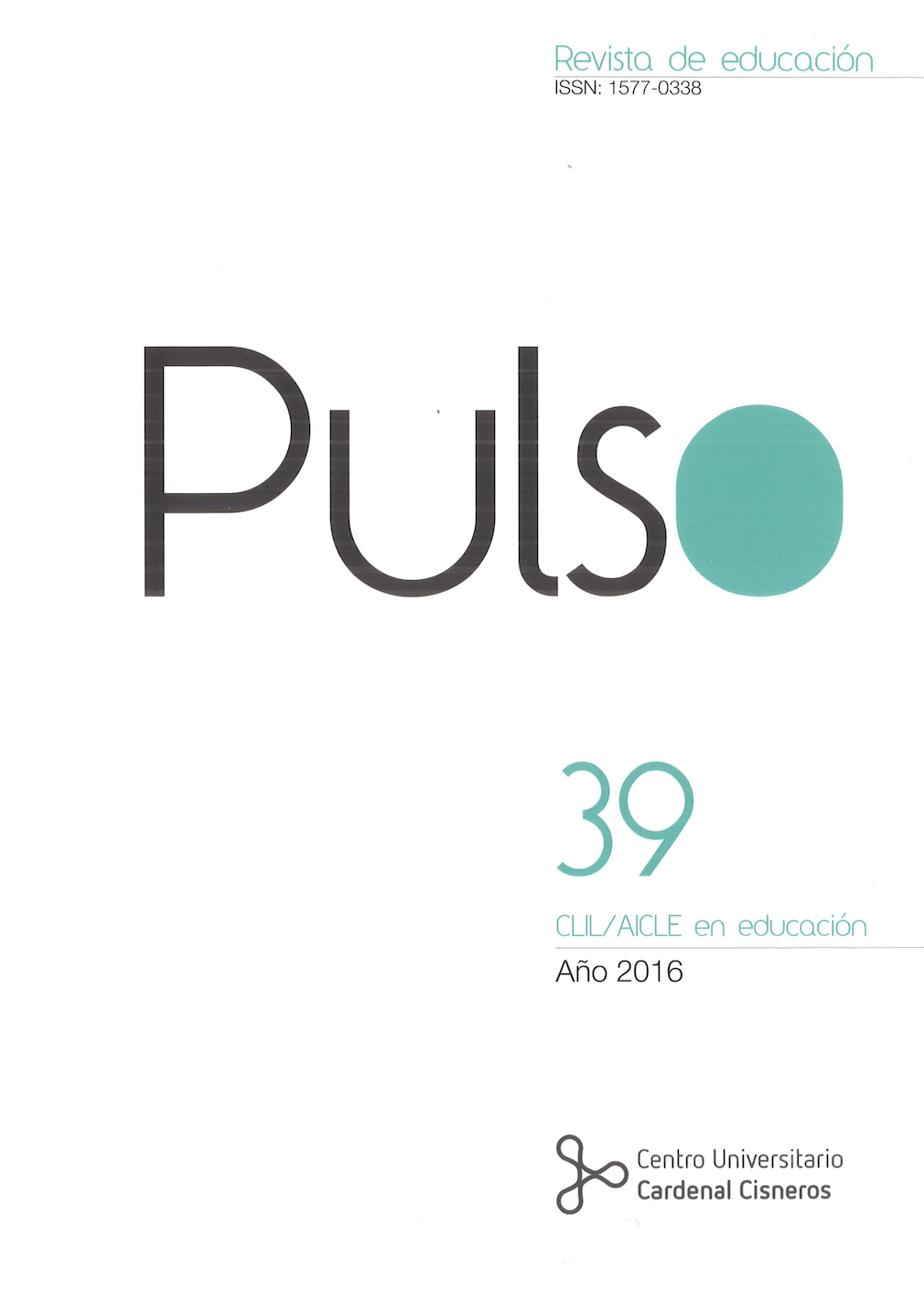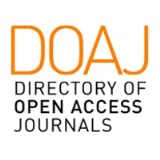Opinions, perceptions and attitudes of a group of students taking a Bilingual Infant Teacher Training Degree: an empirical study
DOI:
https://doi.org/10.58265/pulso.5076Palabras clave:
CLIL, Investigación, Educación Superior, Formación de ProfesoradoResumen
El presente artículo se centra en las opiniones, percepciones y actitudes de un grupo de estudiantes (N=23) que cursan el itinerario CLIL en sus estudios de Grado de Magisterio en Educación Infantil y Educación Primaria, respectivamente. Nuestro objetivo principal es reflexionar acerca de cómo los estudiantes están experimentando esta formación específica basada en la teoría del ‘loop input’ (Woodward, 1986 y 1988), que consigue hacer que los estudiantes experimenten lo que luego pondrán en práctica en sus clases. La información se recogió por medio de un cuestionario, y las áreas que se trataron en el mismo fueron la percepción de su desarrollo lingüístico en inglés, su formación en CLIL como una herramienta de enseñanza, y sus opiniones sobre el itinerario bilingüe, incluyendo las referidas al ámbito afectivo. Los resultados demuestran que los estudiantes perciben un valor añadido en sus estudios, son generalmente capaces de identificar los elementos CLIL en el aula, y afirman haber mejorado su nivel de lengua inglesa. Este trabajo de investigación pretende contribuir a evaluar y mejorar el desarrollo de estudios similares de formación a través de CLIL en Educación Superior
Descargas
Citas
Aguilar, M. and Rodríguez, M. (2011) Lecturer and Student perceptions on CLIL at a Spanish University. International Journal of Bilingual Education and Bilingualism, 15, 2: 183-197.
Ammon, U. and McConnell G. (2002). English as an academic language in Europe: A survey of its use in teaching (Duisburger Arbeiten zur Sprach – un Kulturwissenchaft 48). Bern: Peter Lang.
Coleman, J. A. (2006). English- medium teaching in European Higher Education. Language Teaching, 39,1: 1-14.
Coonan, C.M. (2007). Insider Views of the CLIL Class Through Teacher Self-ObservationIntrospection, The International Journal of Bilingual Education and Bilingualism, 10, 5: 625-646.
Coyle, D. (2010). Foreword. In D. Lasagabaster and Y. Ruiz de Zarobe (Eds.), CLIL in Spain: Implementation, Results and Teacher Training. Newcastle: Cambridge Scholars Publishing, 7-8.
De Graaf, R., Koopman, G.J. Nikina, Y., and Westhoff, G. (2007). An Observation Tool for Effective L2 Pedagogy in Content and Language Integrated Learning (CLIL). International Journal of Bilingual Education and Bilingualism, 10, 5: 503-624.
Dafouz, E. and Núñez, B. (2009). CLIL in higher education: devising a new learning landscape, in Dafouz, E. and M. Guerrini (eds.), CLIL across educational levels. London: Richmond, 101-112.
Dafouz, E. Núñez, B; Sancho, C. and Foran, D. (2007). Integrating CLIL at the teartiary level: teachers’ and students’ reactions, in D. Wolff and D. Marsh (eds.), Diverse contexts-converging goals: CLIL in Europe. Frankfurt am Main: Peter Lang, 91-102.
Dalton- Puffer, C.; Hüttner, J.; Schindelegger, V.; and Smit, U. (2009). Technology-Geeks Speak Out: What Students Think About Vocational CLIL. International CLIL Research Journal, 1, 2: 18-25, available from: http://www.ircj.eu/12/article2.html
Fernández, R. and Johnson, M. (Coords.). (2016). Enseñanza bilingüe en la educación universitaria. El enfoque CLIC del Centro Universitario Cardenal Cisneros. Alcalá de Henares: Centro Universitario Cardenal Cisneros.
Fernández Fontecha, A. (2009). Spanish CLIL: Research and Official Actions. In Ruiz de Zarobe, Y. and Jiménez Catalán, R. M. (Eds.), Content and Language Integrated Learning: Evidence from Research in Europe. Clevedon: Multilingual Matters, 3-21.
Krashen, Stephen D. (1981). Principles and Practice in Second Language Acquisition. English Language Teaching series. London: Prentice-Hall International.
Lasagabaster, D. and Sierra, J.M. (2010). Immersion and CLIL in English: more differences than similarities. ELT Journal, 64, 4: 367-374.
Martin de Lama, M. T. (2015). Making the match between content and foreign language: A case study on University students’ opinions towards CLIL Higher Learning Research.
Mehisto, P. (2008). CLIL Counterweights: Recognising and Decreasing Disjuncture in CLIL. International CLIL Research Journal, 1, 1 available from: http://www.icrj.eu/11-75.
Papaja, K. (2012). The impact of students’ attitude on CLIL: A study conducted in higher education. Latin American Journal of Content and Language Integrated Learning, 5, 2, 28-56.
Ramos García, A.M. (2012). Higher Education Bilingual Programmes in Spain. Porta Linguarum, 19: 101-111, available from: http://www.ugr.es/~portalin/articulos/PL_numero19/7%20A%20M%20Ramos.pdf.
Thijssen, W. and Ubaghs, L. (2011). Teacher’s and students’ perceptions of the effects of content and language integrated learning (CLIL) chemistry education: A case study at a secondary school in the Netherlands, Available from: http://alexandria.tue.nl/extra2/ afstversl/esoe/716591.pdf.
Woodward, T. (1986). Loop Input-a process idea. The Teacher Trainer 1: 6-7.
Woodward, T. (1988). Loop Input. Canterbury: Pilgrims.
Woodward, T. (1991). Models and metaphors in language teacher training. Cambridge: Cambridge University Press.
Yang, W. and Goslin, M. (2013). National Appraisal and Stakeholder Perceptions of a Tertiary CLIL Programme in Taiwan. International CLIL Research Journal, 2/1: 67-81.
Descargas
Publicado
Cómo citar
Número
Sección
Licencia
Derechos de autor 2022 Pulso. Revista de educación

Esta obra está bajo una licencia internacional Creative Commons Reconocimiento-NoComercial-SinObraDerivada 3.0.
Esta revista proporciona un acceso abierto inmediato a su contenido, basado en el principio de que ofrecer al público un acceso libre a las investigaciones ayuda a un mayor intercambio global de conocimiento.
Las obras se publican en la edición electrónica de la revista bajo una licencia Creative Commons Reconocimiento-NoComercial-SinObraDerivada 4.0
Se permite y se anima a los autores a difundir electrónicamente la versión post-print (versión evaluada y aceptada para su publicación) de sus obras antes de su publicación, ya que favorece su circulación y difusión más temprana y con ello un posible aumento en su citación y alcance entre la comunidad académica.














